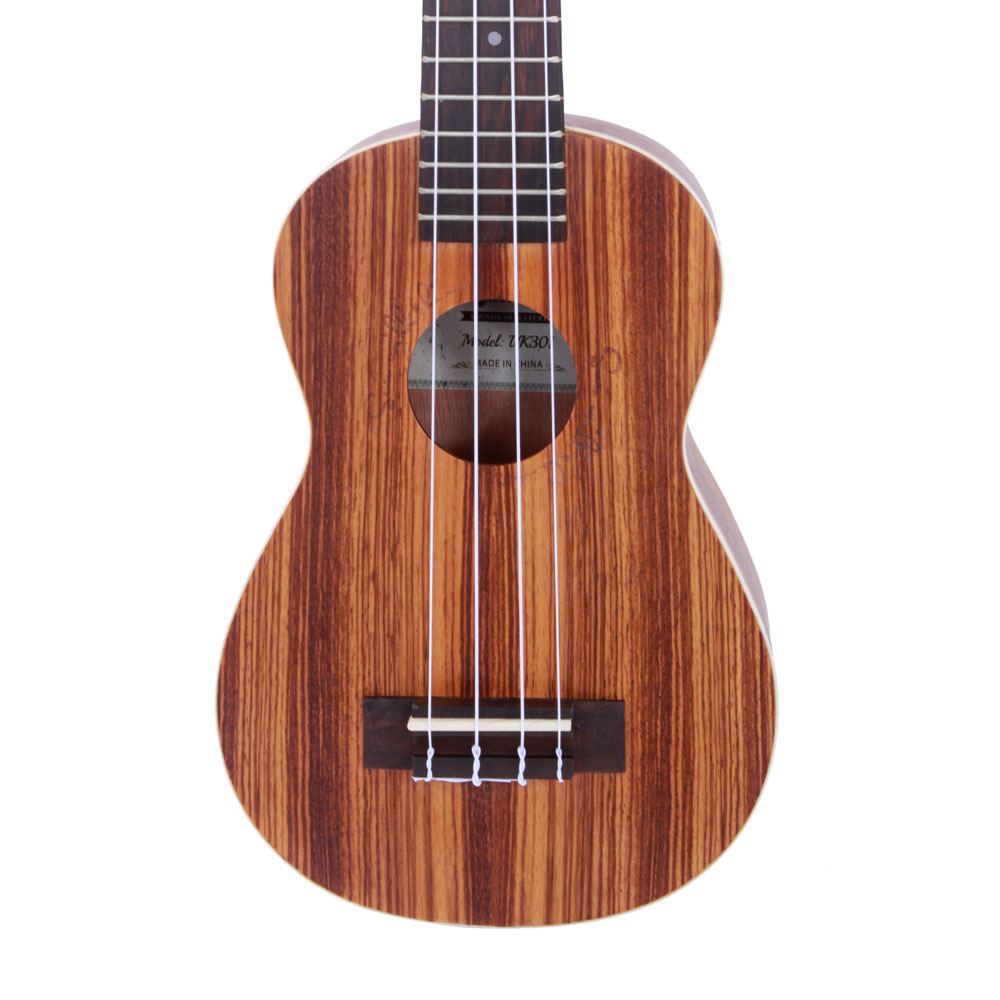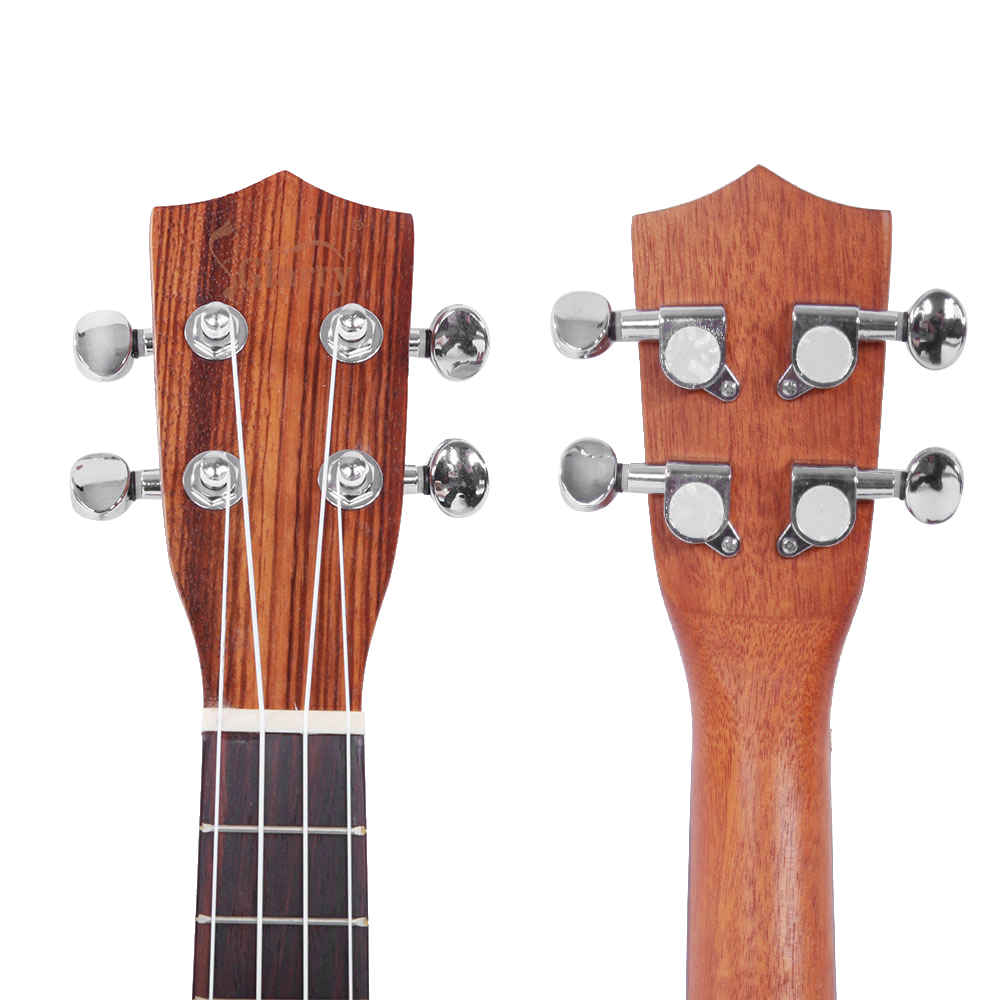
Introduction
Good job, you’ve been through lesson #1, the sizes of a uke!
You discovered what are the different sizes of a ukulele, now you need to know the anatomy of this instrument. Firstly, you can identify the different parts of a ukulele in the drawing above. Secondly, I will detail each part below.
Ukulele part 1 : The body

The body is made of the back, the sides and the top. At the top, there is the soundhole, which has a standard surface. The shape of this hole does not affect the quality of the sound.
Traditionally, were made of Kao wood or mahogany, but nowadays these ukuleles are quite expensive. Modern ukuleles are made from many cheaper kinds of wood like acacia, maple, cedar, mango, or many others. Some are also made of plastic or laminate wood.
Ukulele part 2 : The Bridge

The bridge is often made of wood, but you can also find some in metal. The strings are knotted to this piece, each one in a hole. You can learn how to change your strings on my post How to change ukuleles strings ?
Ukulele part 3 : The saddle and the nut

As you can see on the picture of the bridge section, there is a white piece supported by the bridge, on which the strings vibrate. It’s the saddle. On a good ukulele, the saddle is compensated, as a result the intonation of the strings is more accurate. Learn more on my article about how to choose a ukulele saddle.
The nut is used to keep the ukulele strings in the good position, each string is trapped in a small slot.
The saddle and the nut are made of the same material, which is either bone or plastic.
Ukulele part 4 : The neck and the frets

The neck connects the head with the body and support the fretboard which is where you put your fingers to make a chord, using the frets.
The frets are the bars that allows you to make a note with a string. For more information about that, you can go to my page how to make a chord with a ukulele.
The neck is made of wood and the frets are made of metal.
Ukulele part 5 : The head and the tuners

The head of the ukulele, also called headstock, is the top part of this instrument. Usually, the brand puts its logo or name on it, and the tuners are fixed on this head.
A tuner is a part that holds a string, and also allows you to tune your uke. if you want to know more about tuning a ukulele, go lesson #3, How to tune a ukulele.
The head is made of wood, often the same that the neck and the tuners are made of metal and plastic/bones.
Ukulele part 6 : The strings

The strings are certainly an important part of your ukulele and can change how it sounds. Sometimes you’ll need to change them, many times because one broke. This is the string that you make vibrate one way or another, and that produces the sound.
When the ukulele was invented, strings were made of gut, but now it’s most often made of nylon or fluorocarbon.
Interesting fact: fishing lines are also made of fluorocarbon and some ukulele players use them to get cheap and good strings!
Conclusion
In conclusion, you have to remember that when you pluck a string, you make it vibrate. The vibration goes into the body of your ukulele, resonates, and is projected out by the soundhole. You can produce different pitches and note pressing one fret or another.
Wow! Now you know a little more about ukuleles. It’s time to learn how to tune it on lesson # 3: How to tune a ukulele!
